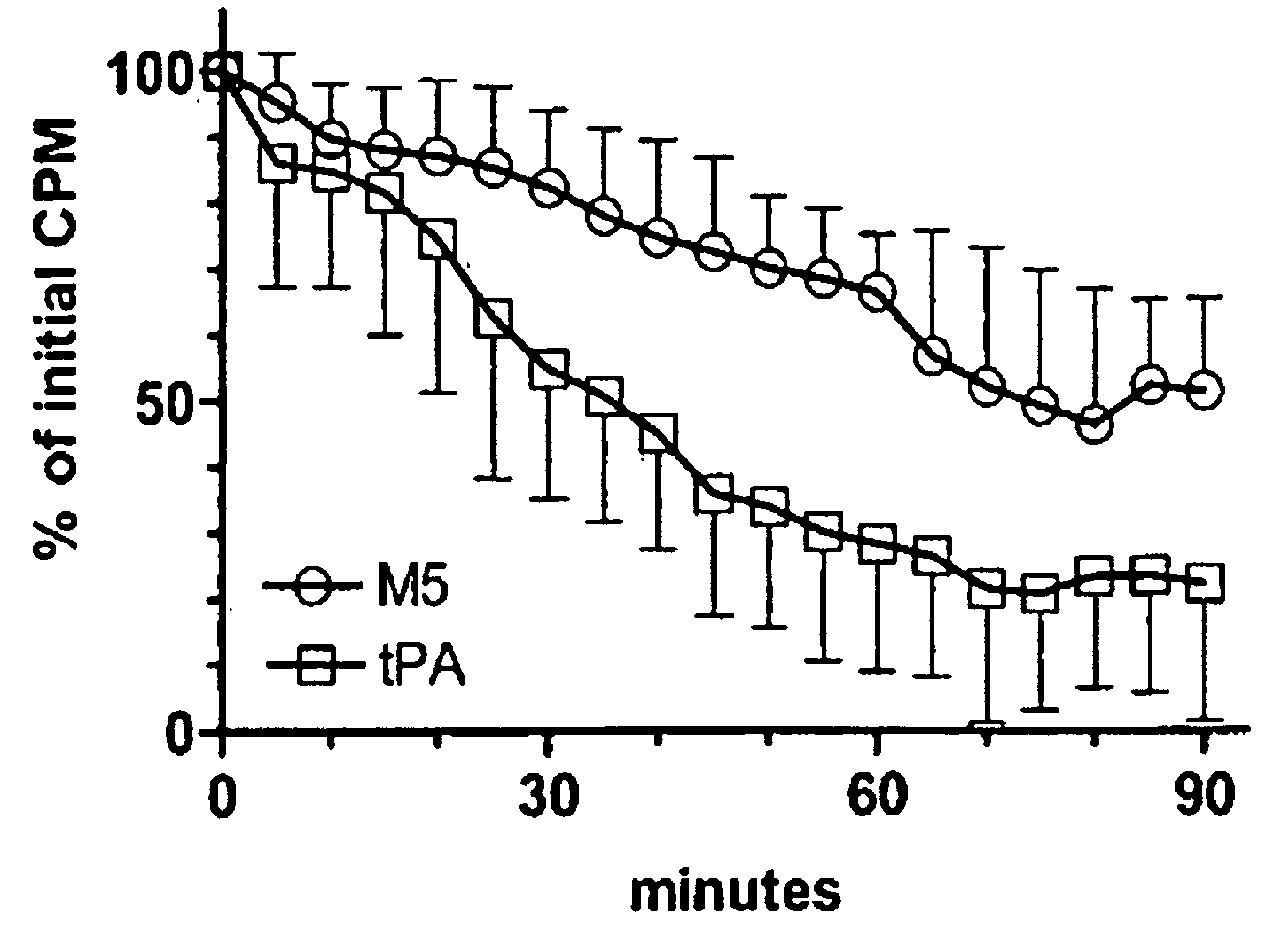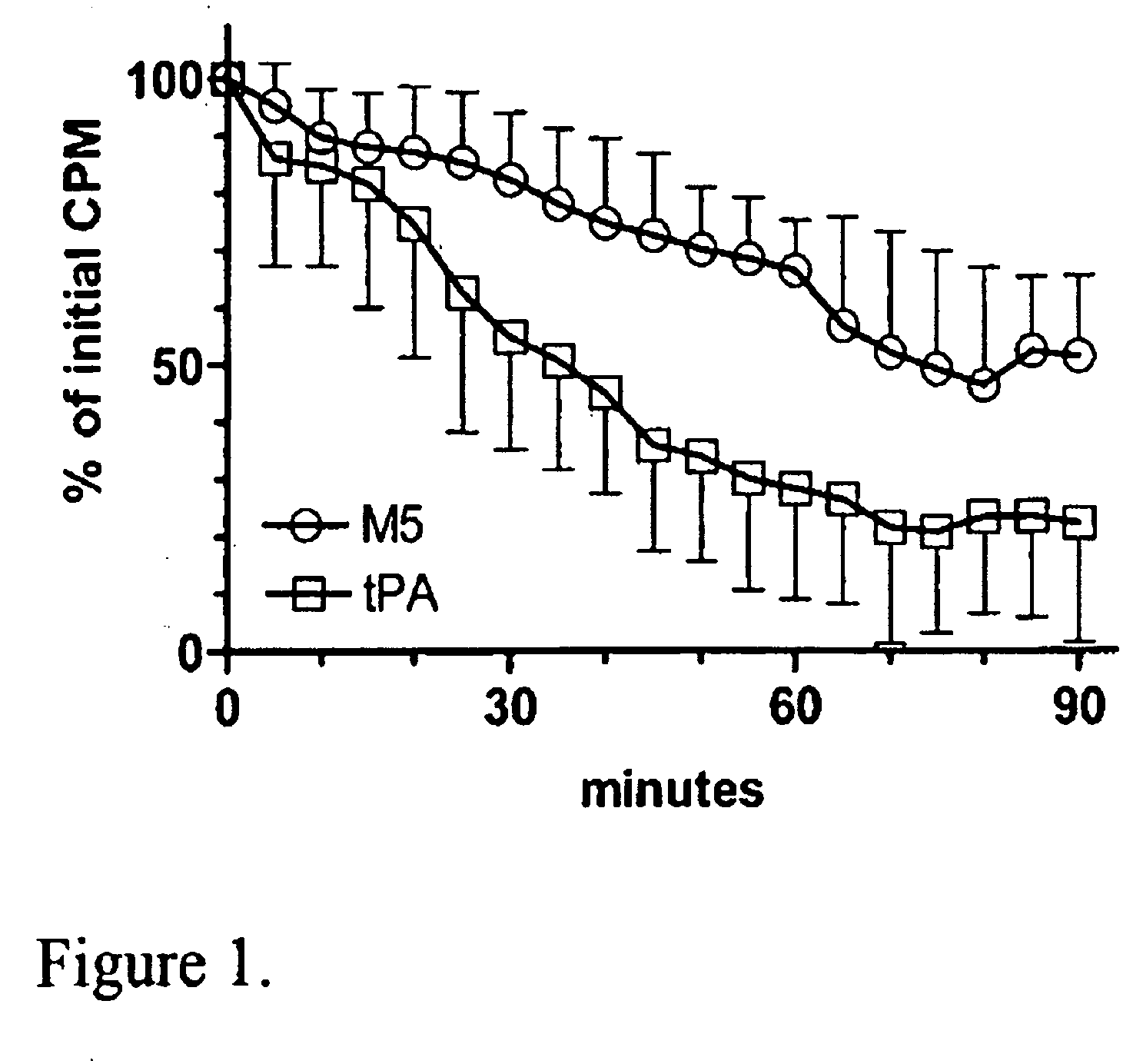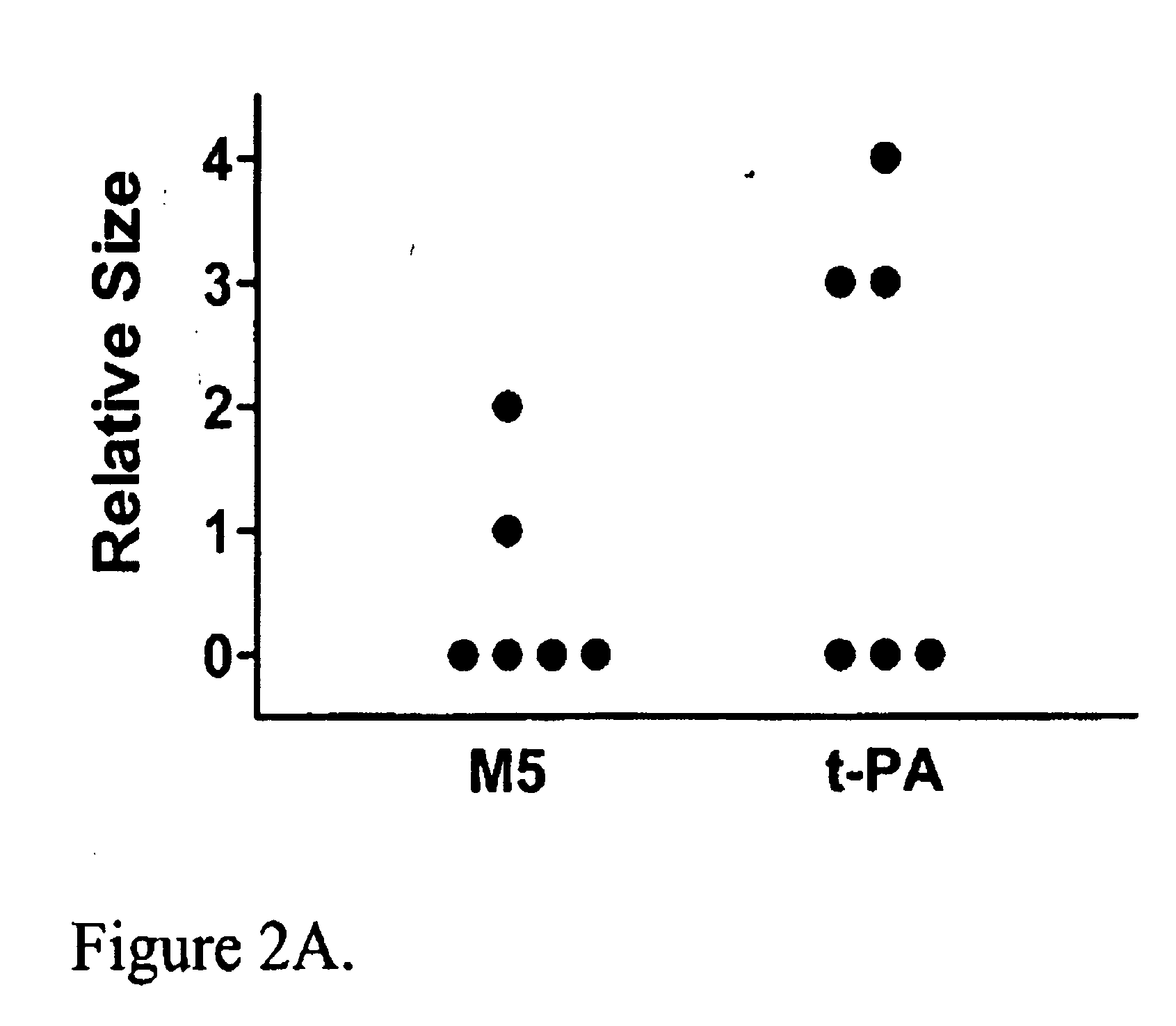C-1 Inhibitor prevents non-specific plasminogen activation by a prourokinase mutant without impeding fibrin-specific fibrinolysis
a prourokinase and mutant technology, applied in the field of c-1 inhibitors, can solve the problems of serious inhibition rate insufficient prevention, unstable proupa in plasma, serious impairment of proupa in clinical trials, etc., and achieve the effect of less subject, more stable proupa and serious impairmen
- Summary
- Abstract
- Description
- Claims
- Application Information
AI Technical Summary
Benefits of technology
Problems solved by technology
Method used
Image
Examples
example
[0054]Materials
[0055]Recombinant Lys300→His proUK expressed in Escherichia coli was prepared as previously described [Liu, et al., Circ Res. 90: 757-763 (2002)] and obtained from Primm (Milan, Italy). Single-chain tPA, pharmaceutical grade, was purchased from Genentech (San Francisco, Calif.). Recombinant proUK expressed in E. coli was obtained from Landing Science and Technology Company, Nanjing, China. Aprotinin was obtained as Trasylol from Miles, Inc., Kankakee, Ill. Purified human C1-inactivator was obtained from ZLB Behring, Germany.
[0056]Methods
[0057]Fibrinogen was measured as thrombin clottable protein. Plasma (0.5 ml) was diluted with 2 volumes of 0.06 M sodium phosphate, pH 6.1. One volume of thrombin (100 NIH units / ml; ThromboMax from Sigma, St. Louis, Mo.) was added and mixed and incubated for 30 min at 37° C. The clot was wound onto a wooden stick to express the diluted serum proteins, rinsed by standing in 5 ml of the buffer; then deposited into a tub...
example 2
[0100]Materials
[0101]Recombinant Lys300→His mutant (M5) prouPA expressed in Escherichia coli (E. coli) was prepared as previously described [Liu, et al., (2002), supra] and obtained from Dr. Paolo Sarmientos at Primm (Milan, Italy). Recombinant prouPA expressed in E. coli was obtained from Landing Science and Technology Company, Nanjing, China. Human C1-inhibitor concentrate prepared from human plasma was kindly supplied by ZLB Behring GmbH (Marburg, Germany). Human Complement factor four (C4) was obtained from Calbiochem, Torry Pines, Calif. Chromogenic substrates for uPA (S-2444) and plasmin (S-2251) were obtained from DiaPharma (West Chester, Ohio, USA). The chromogenic substrate for C1 esterase (Spectrozyme C1E) was obtained from American Diagnostica, Stamford, Conn.
[0102]Methods
[0103]Fibrinogen was measured as thrombin clottable protein. Plasma was diluted with 2 vol 0.06 M sodium phosphate, pH 6.1. One volume of thrombin (100 NIH U / ml, ThromboMax from Sigma,...
PUM
| Property | Measurement | Unit |
|---|---|---|
| concentrations | aaaaa | aaaaa |
| physiological concentration | aaaaa | aaaaa |
| physiological concentration | aaaaa | aaaaa |
Abstract
Description
Claims
Application Information
 Login to View More
Login to View More - R&D
- Intellectual Property
- Life Sciences
- Materials
- Tech Scout
- Unparalleled Data Quality
- Higher Quality Content
- 60% Fewer Hallucinations
Browse by: Latest US Patents, China's latest patents, Technical Efficacy Thesaurus, Application Domain, Technology Topic, Popular Technical Reports.
© 2025 PatSnap. All rights reserved.Legal|Privacy policy|Modern Slavery Act Transparency Statement|Sitemap|About US| Contact US: help@patsnap.com



